How to Do A/B Testing in BigCommerce?
For an online business, after customizing the store theme, testing is one of the keys to determine how good or bad your business is and will be. Furthermore, you can control your management system effectively.
That is why it’s crucial to regularly run A/B tests to know you are making evidence-based decisions that are actually improving the performance of the business.
If you have not finished any A/B tests before, you may be unsure of what it involves, what the benefits to them are, and even what you should test. Don’t worry because, in this article, we will guide you on how to do A/B testing in BigCommerce.
The good news is that A/B testing is a simple form of the test, however, you should follow the research to do the test well and accurately.
What is A/B testing?
A/B testing is known as split testing. It is incredibly simple in that all it involves is sending two different variables (an A variable and a B variable) to your email list. Then, you can see which variable performs better.

The clear difference between two variables could be something small like a worded subject line that most subscribers do not notice much. Or it may be something big more considerable such as an entirely different email design and layout.
Good A/B testing will only test one element at a time. In that way, you find it more confident that any difference in how the two variables performed is down to that element solely. For example, the one element can be:
- Navigation A/B test: testing two different content layouts for the same products to see which layout generates more sales.

- Product detail page A/B test: seeing if placing different products for your site makes it easier for customers to purchase. Or if adding more educational information about the products will affect whether the add-to-rate rate or not.

- Form A/B test: seeing whether consumers are more inclined to complete a form with fewer fields and simpler placeholder text within the fields.

In the context of your own eCommerce store, you can use A/B testing when comparing other cases such as:
-
Body copy
-
Website photography and product images
-
New visual styling for a page
-
New pricing strategy
-
Different promotions/offers
A/B testing is not a one-time deal. It is an iterative process, with each test building upon the results of the previous tests. Like physical fitness, as this test is done consistently and with focus, it allows you to improve your overall website design to better align with your customer behavior as well as the business goals.
This test is a long-term process based on compiling data you have had in your store. Therefore, when you start, you may not see significant benefits, but you will be amazed at the entire improvements after a couple of months.
The benefits of A/B testing
A/B testing dramatically reduces the risks associated with redesigning your website. Instead of taking a big gamble on an entire site redesign, which ultimately leads to your conversions tanking, you are making small and incremental development.
Each of these improvements is geared toward improving the customer experience. Finally, A/B testing cuts through the opinions of those paid the most.
The challenges of A/B testing
It would be lying if we said A/B testing was a magic bullet and that one test will fix everything and cause your revenue to skyrocket. The reality is that it’s an ongoing, incremental, iterative process.
It’s like you do exercise to lose weight. A single workout isn’t going to do much for your physique. Random workouts aren’t going to help much either. If you want results, you need a plan that you consistently implement. The same goes for A/B testing as well. Once you develop your roadmap, you need to follow it closely.
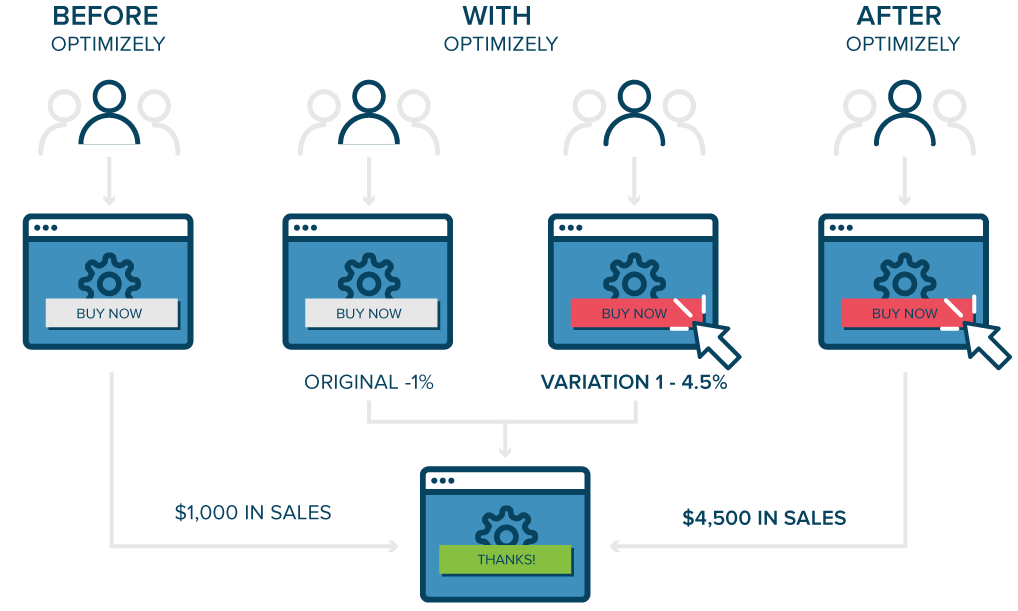
Areas of improvement will be tested systematically, and each test will build upon the results of the previous test. It requires a fair amount of experience to do effectively. In Addition, there needs to be a fundamental understanding of web design, statistical analysis, and other domain-specific knowledge.
1. It’s a process
Contrary to what you believe when reading several articles, A/B testing is not a silver bullet. A single test probably won’t do much for your revenue.
As mentioned above, it’s a long-term plan and then sticking to that plan. It’s about targeting specific goals and improvements over time.
2. Traffic is required
We touched on this above, but it needs repeating. While the amount of site visitors will vary depending on the test and the objectives, you have at least a fair amount of traffic to ensure that your tests are statistically valid.
If your site has a low traffic volume, you’ll probably need to work on raising that before you can begin A/B testing.
When you should use A/B testing
Random A/B testing is always a bad idea. It results in you assuming an inordinate amount of time testing areas that matter very little while ignoring the biggest drivers of growth.
Because you’re testing random variables, it makes it difficult to determine which changes have had the greatest effect. Before you begin testing, you need a roadmap. This roadmap will guide you specifically through what to test and in what order.
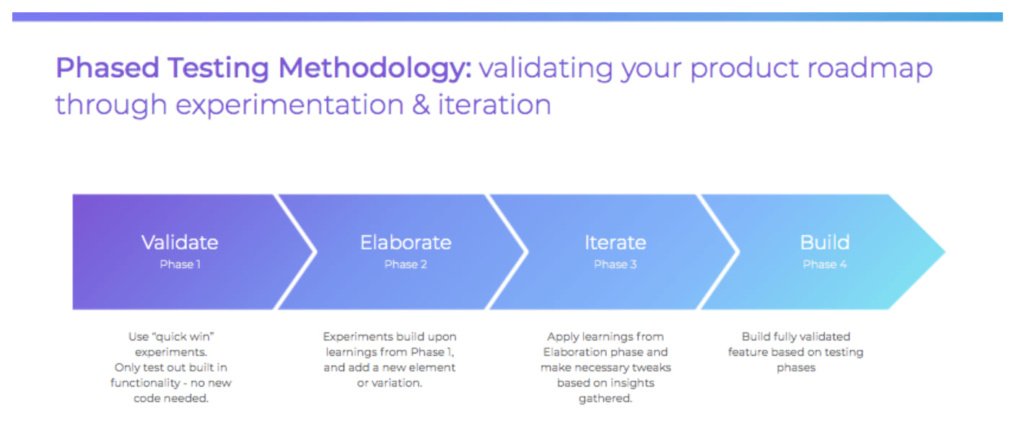
By doing thorough research on your customers and how they behave on your site. Some of the research tools include:
-
Analytics – Identify your most popular pages, CTR, traffic sources, pages with a high bounce rate, paths through your site, etc.
-
Heatmaps – Discover exactly where and how people navigate your site. See where they click, where they pause, where they get confused, etc.
-
User Tests – Personally watch users navigate your site to discover where points of friction occur. Proper user testing will also include the testing subjects speaking out loud about what they are experiencing as they complete tasks on your site.
-
Surveys – Directly ask your customers about their shopping experiences. Did they encounter any problems? What would they like to see improved?
After doing a thorough analysis of your customer’s behavior, you can begin to develop hypotheses about your current website and how you might improve the overall customer experience.
These hypotheses then form the basis of your A/B testing roadmap.
How to do A/B testing in BigCommerce
Step 1: Research
Look at competitors as a case study and examine the internal data to look for areas that could potentially be improved with testing.
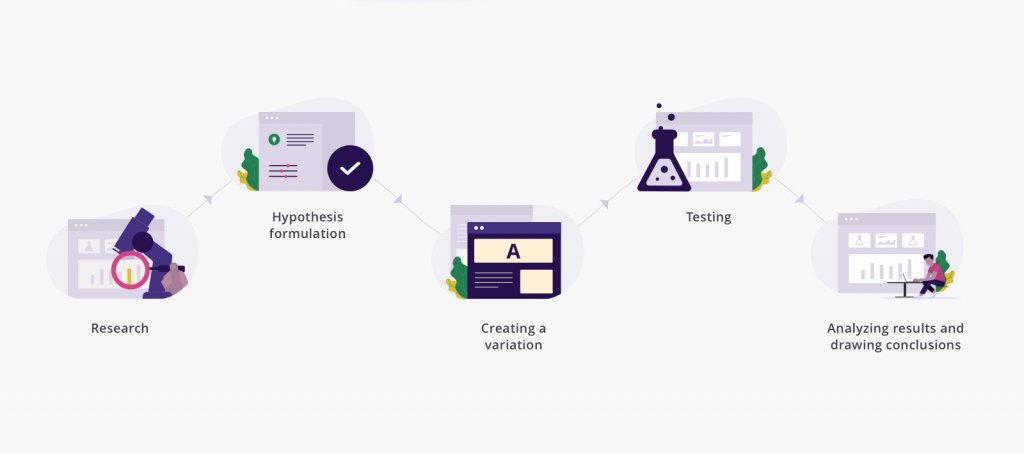
Furthermore, start by researching other online stores to see what your site might be missing. Take notes on features that stand out, such as unique navigational features, image placements, types of pages, and so on.
Step 2: Create hypothesis
Based on your findings, or even a gut feeling, make an assertion to be tested. For example, you may say,”Users have difficulty in finding the Shipping information, which can lead to the current decrease of conversion rate”.

Either you have a roadmap forming a hypothesis as we mentioned above, the important thing is picking the precise variables to predict the analysis correctly for your store.
Step 3: Determine the variables
An A/B test is a type of scientific experiment and must be done with proper controls to gain an accurate conclusion.
With the example in the second step, version A is the Shipping Information section, and version B is the decrease in conversion rate.
Step 4: Set the parameters
Now you have to determine how many visitors you’ll need to generate accurate results, as well as how long you’ll need to run the experiment. Optimizely is a popular A/B testing marketing tool that offers a useful A/B test calculator to help you make an accurate decision.

Keep in mind that all website elements besides the variable being tested must be kept identical to yield valid results.
Step 5: Begin the A/B testing
Once you know what you want to test and for how long, you can use an A/B testing platform to begin the test. First, you need to determine whether you want to do the testing in-house or hire an outside agency to do the testing.
Next, you should find the right solution for each A/B testing purpose.
1. Evaluate the skill set
Regardless of your choice, here are some of the critical skills to look for in testing and optimization are:
-
Data research.
-
Statistical analysis.
-
UX design.
-
Behavioral psychology.
-
Project management.
-
Persuasive writing.
-
Conversion strategy for conversion optimization.
-
User research.
-
Information architecture.
-
HTML and CSS.
-
jQuery and JavaScript.
Each of these skills contributes uniquely to the CRO process - a robust process requires a variety of skills, and the absence of any of them can lead to ineffective A/B testing.
2. Using the right A/B testing tools
Optimizely and VWO are excellent choices for BigCommerce, and its intuitive interface makes BigCommerce A/B testing easy, even if you’re not the most tech-savvy person.
Optimizely tool
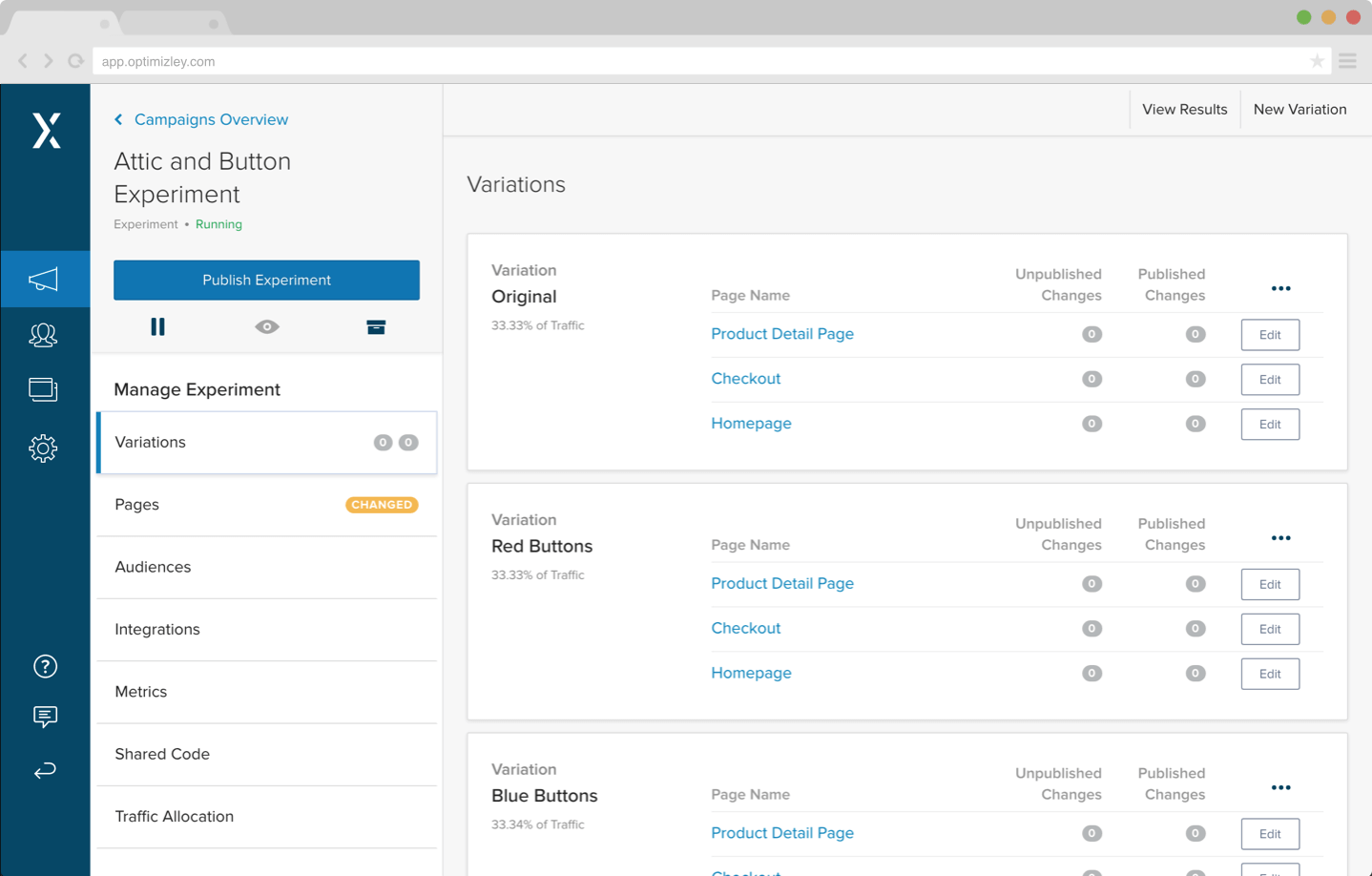
Optimizely is a feature-rich, enterprise-level A/B testing tool and is priced accordingly. It is widely considered the industry leader for larger sites.
For many small to medium-sized businesses, it can be like using a semi-truck when a pickup will do. We recommend considering whether you will realistically utilize its full suite of features before you select this tool.
VWO tool
Visual Website Optimizely (VWO) is an effective small to medium-sized business A/B testing tool.
It provides a solid mix of features that will do all of the core tasks that a professional A/B testing tool should. While it does not offer as many premium features as Optimizely, it is often a more cost-effective alternative for many growing businesses.
Google also recently released a free tool called Google Optimize, which can be good for beginners, but doesn’t provide the robust set of tools you need to truly do A/B testing effectively.
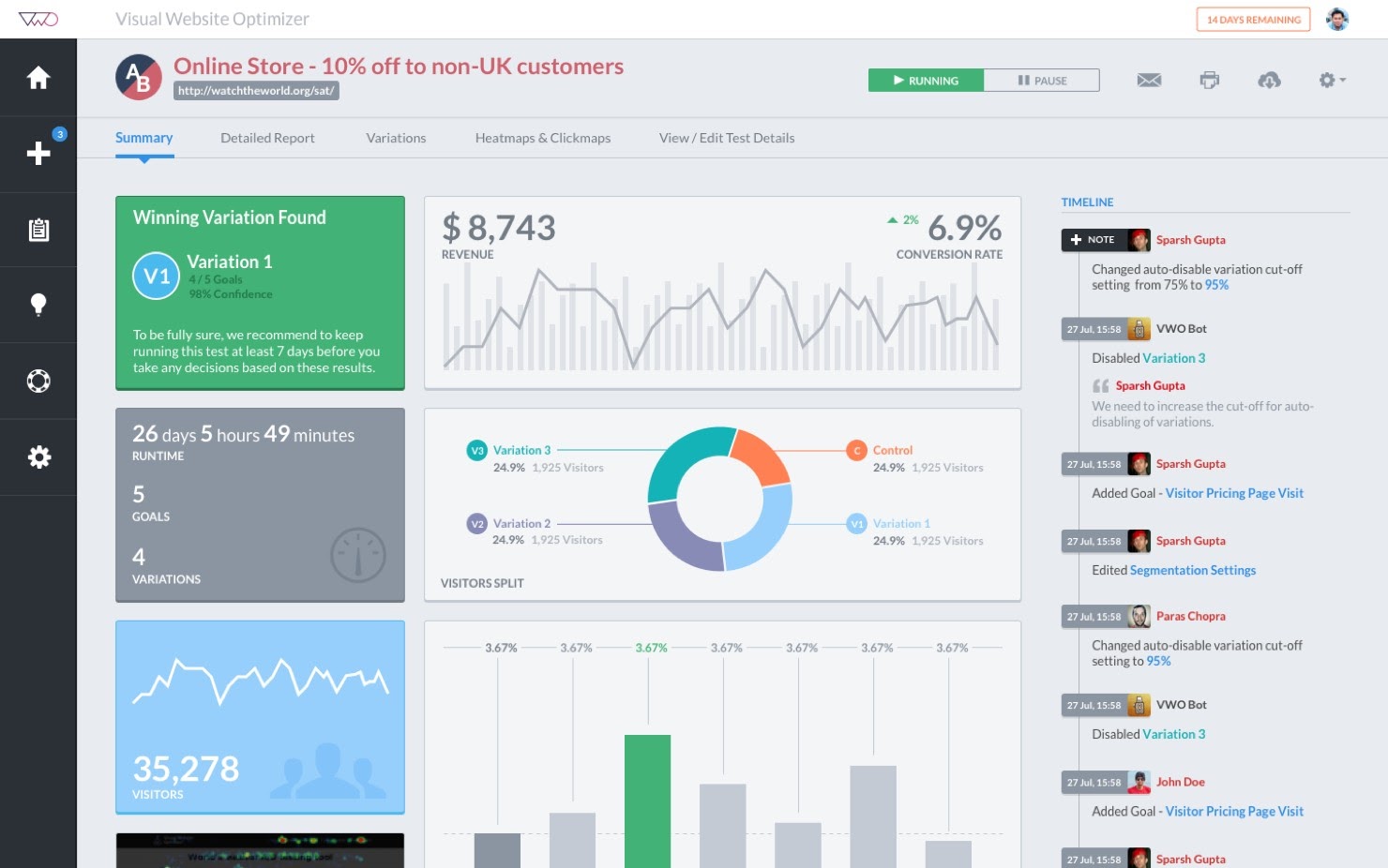
Be sure you feel some level of comfort with the software you choose. After the test has concluded, you can use the data you’ve gathered to decide if you should stick with Version A or switch over to Version B (or Version C, etc.). Don’t run the test for longer than necessary; once you’ve arrived at your conclusion, move on to the next test. It’s more valuable to run lots of short tests than fewer long ones.
How it works
You have already had a general idea of what and why doing A/B testing. Now, let’s get to know how you do this test. There are two primary types of A/B testing, which are client-side and server-side. The client-side is more common to utilize.
-
Client-side testing involves sending the exact same version of a page to every visitor and then using Javascript to make changes and tweaks within the visitor’s browser before they are shown the resulting page.
-
Server-side testing is when your web server shows visitors different page variations, altering them on the server before sending them to the visitor’s browser. No modifications to the page are happening in the browser.
Regardless of which type is used, a methodology is the same.
For example, you may send 50% of your traffic to variation A and 50% of your traffic to variation B. Then you analyze the data to determine whether variation A or variation B is more effective, according to a set objective (conversion), whether that’s sales, email opt-ins, click-through rates, etc.
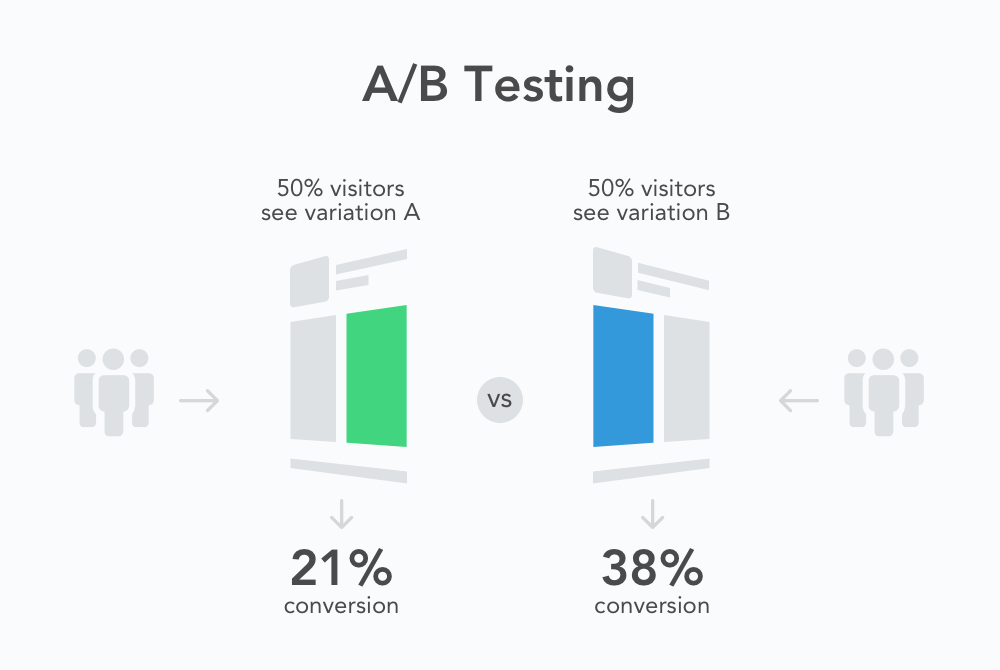
In order to be confident that test results are accurate and not the result of an anomaly, a certain number of visitors (the sample size) must be reached.
If this threshold isn’t met, A/B tests can be inaccurate, leading you to implement changes that can actually hurt your site. Thus, you need to do it carefully and can need help from an expert not to make any mistakes.
Conclusion
A/B testing is one of the most powerful and effective ways to drive eCommerce growth.
If you keep performing new tests, you’re naturally going to keep improving your website, which is going to increase your bottom line. BigCommerce A/B testing is an ongoing process that makes it possible to keep evolving your web store to achieve optimal results.
That said, some of the most profitable companies in the world have achieved massive success in large part due to A/B testing. Therefore, don’t neglect A/B testing.
We hope that this article How to do A/B testing in BigCommerce works for your practices! During doing the test, if you encounter any problems, contact us or leave a comment down below to receive our support.





